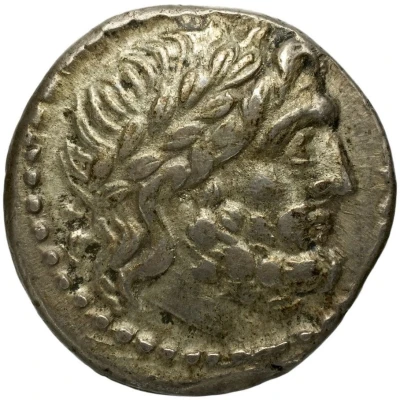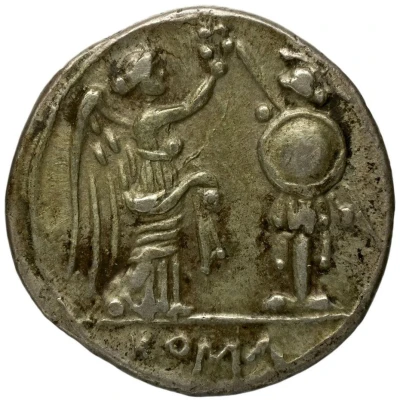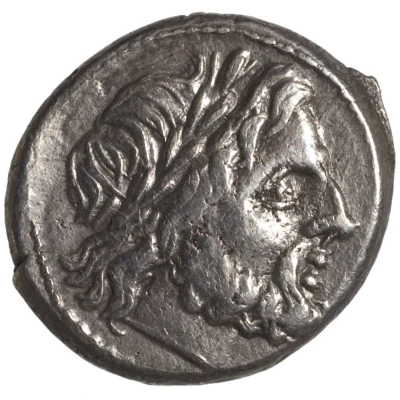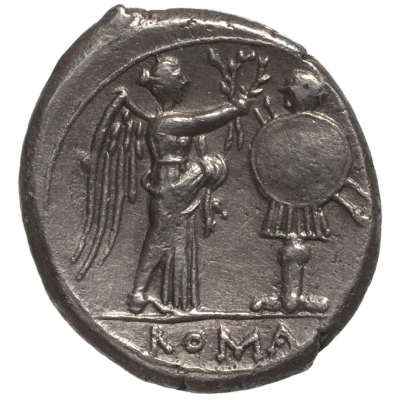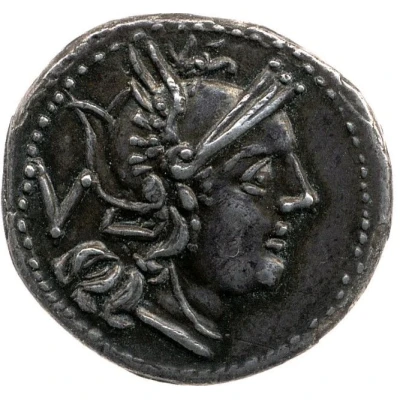
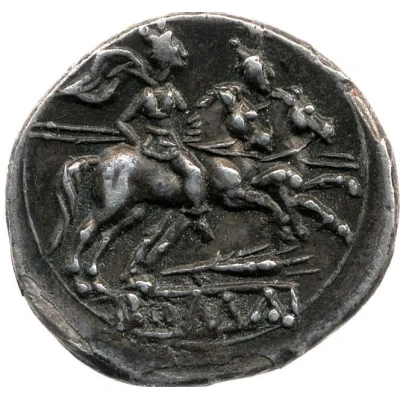

© British Museum
Quinarius Anonymous; ROMA 211 BC - 208 BC
| Silver | 2.20 g | 16 mm |
| Issuer | Rome › Roman Republic (509 BC - 27 BC) |
|---|---|
| Period | Republic (509 BC - 27 BC) |
| Type | Standard circulation coin |
| Years | 211 BC - 208 BC |
| Value | Quinarius (½) |
| Currency | Denarius of 10 Asses (221 – 141 BC) |
| Composition | Silver |
| Weight | 2.20 g |
| Diameter | 16 mm |
| Shape | Round (irregular) |
| Technique | Hammered |
| Orientation | Variable alignment ↺ |
| Demonetized | Yes |
| Updated | 2024-10-06 |
| Numista | N#385513 |
|---|---|
| Rarity index | 97% |
Reverse
Dioscuri galloping, right; below, mark (corn-ear); in linear frame, inscription. Line border.
Script: Latin
Lettering: ROMA
Translation: Rome
Comment
Weight varies from 1.35g-2.3gMinted in Sicily
RRC 68/2a
Obverse: Helmeted head of Roma, right. Border of dots. Behind, denominational mark (V).
Reverse: Dioscuri galloping right. Line border. Below, legend (ROMA). Below, symbol (corn-ear).
@British Museum
RRC 68/2b
Obverse: Helmeted head of Roma, right. Border of dots. Behind, denominational mark (V).
Reverse: Dioscuri galloping right. Line border. Below, legend (ROMA).
@American Numismatic Society
Interesting fact
The Quinarius was the first Roman coin to feature the image of a deity, with the goddess Roma depicted on the obverse (front side) of the coin. This was a significant departure from earlier Roman coins, which had featured images of animals or abstract designs. The inclusion of a deity on the coinage was a symbol of the growing power and influence of the Roman Republic, and marked a shift towards more formalized religious practices in Roman society.
